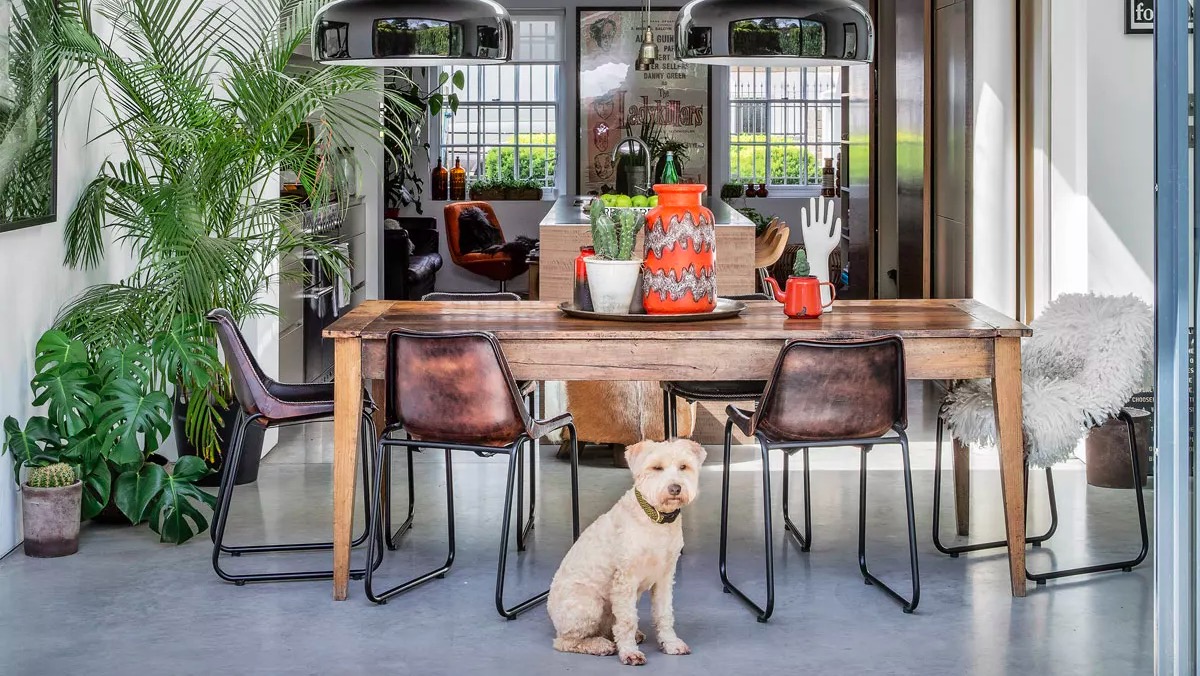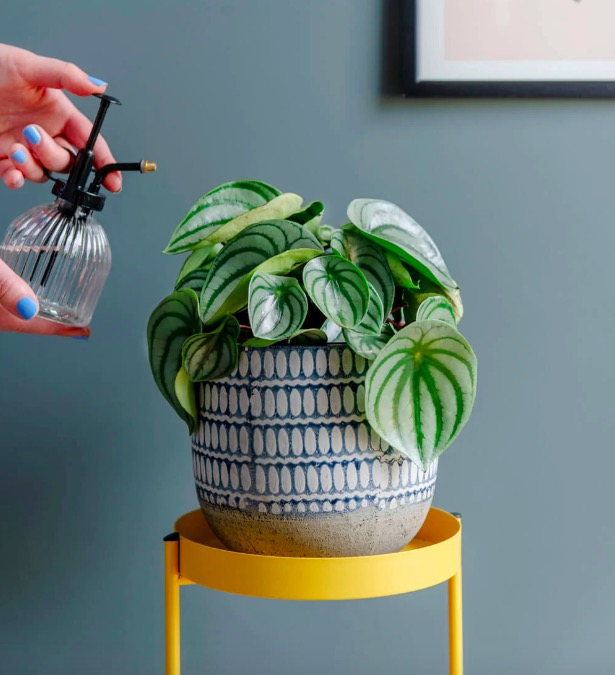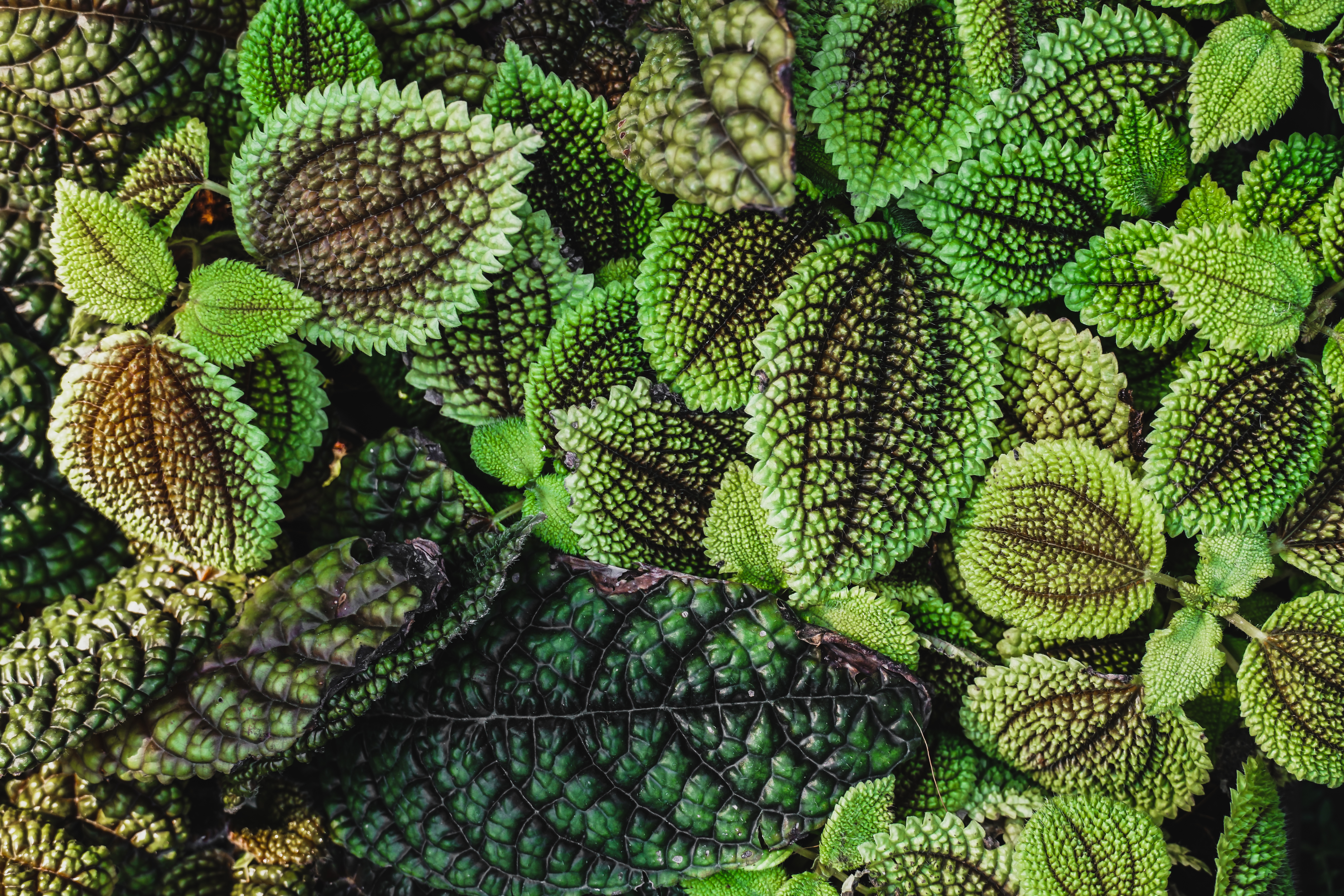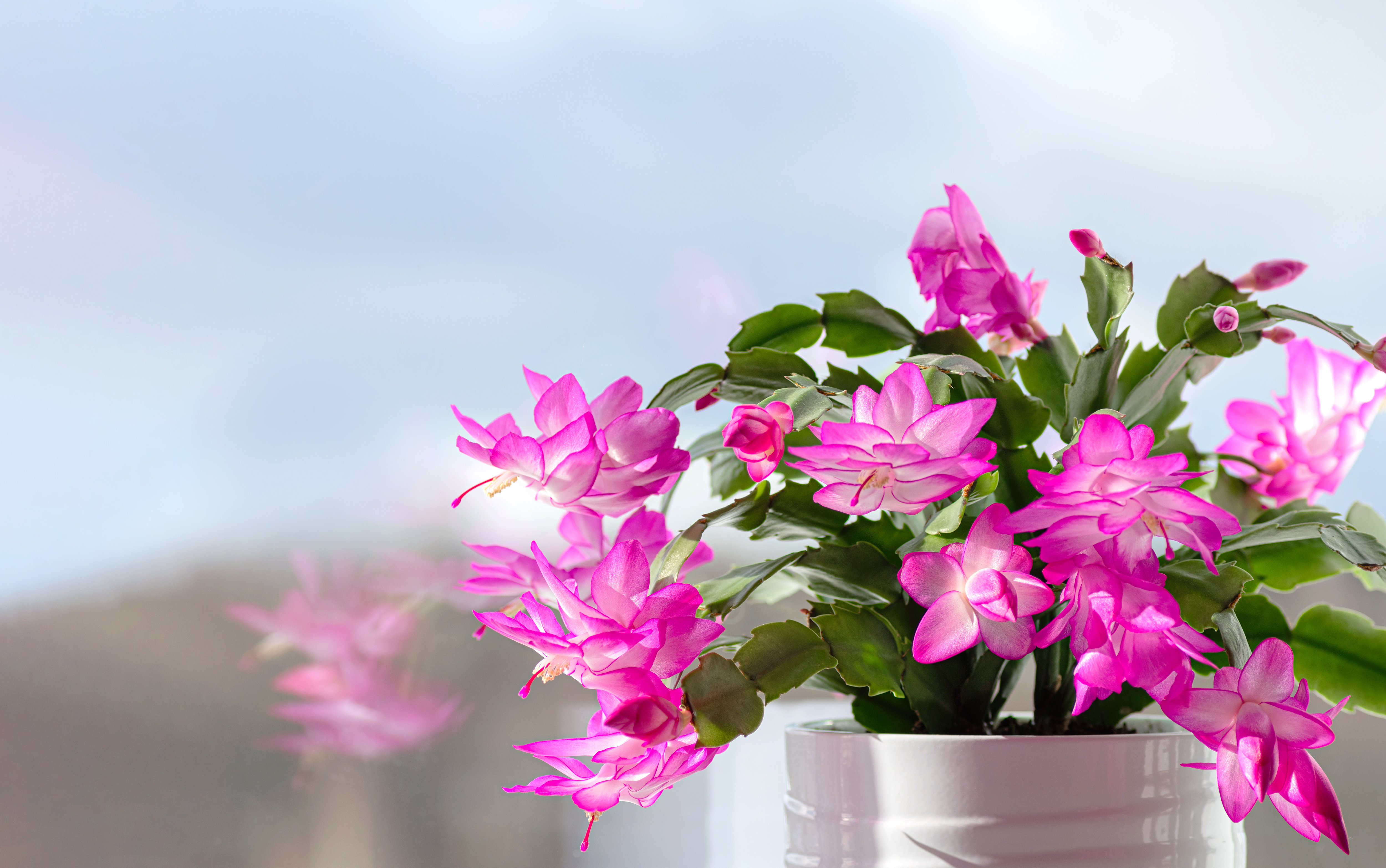
Pet safe houseplants are the best way to welcome natures beauty into your home, while also taking care of your furry friends. As a pet parent myself, I understand the importance of finding non-toxic solutions, while also embracing texture and color throughout the space.
Worry not, as there are many popular houseplants that add texture, color, and brightness that your beloved pets can also enjoy. "Choosing pet-safe plants is essential for the safety and well-being of our furry friends," says plant expert Tony O'Neill from Simplify Gardening. "Many common houseplants can be toxic to pets, causing a range of health issues from mild irritation to severe poisoning. By selecting pet-safe plants, you ensure a harmonious and safe environment where your pets can explore without any risk to their health".
From the ravishing Money Plant to the elegant White Bird of Paradise plant, there is a range that will bring green to your place. Here is everything you need to know about pet-safe houseplants.
Best Houseplants for Pets
There are many houseplants you should never bring into a home with pets as it can cause some trouble to both cats and dogs.
But what alternatives are there and what houseplants are non-toxic to pets? Here are 15 pet safe houseplants — chosen by plant experts.
1. Kentia Palm (Howea forsteriana)

Palms are a classic houseplant, they are always on trend and can work in any style of room, whether that's super minimalist to Mid-century retro. A lot of palms are pet-friendly and the Kentia palm is an elegant touch that you should welcome into your home. They are also one of the best houseplants to clean the air in your home.
"The perfect indoor palm, the Kentia is a stunning statement piece with its long stems and thin, angular leaves." says Mark McCance, founder of Hortology. "Trimming away older, dying stems as low to soil level as possible will stop them drooping down meaning you’ll avoid the risk of them being tugged and dislodged by pets."
Plant expert, Tony O'Neill from Simplify Gardening says, this classic indoor plant is ideal as it also grow well in low to bright light. "It's low-maintenance and adds a touch of elegance to any space".
And houseplant expert, Lisa Eldred Steinkopf, from The Houseplant Guru seems to agree. "Kentia palms are not inexpensive houseplants but add a touch of the exotic to a home. Keep them well watered and if possible, take them to the shower and rinse them off to keep spider mites at bay," she says. "Give them a good bright light, fertilize regularly, and they should thrive in your home".
Sunlight: Indirect or filtered
Soil: Well-draining, loamy
2. Guiana Chestnut (Pachira Aquatica)

Pachira Aquatica, also known as the Money Tree is a perfect pet safe alternative. These low maintenance indoor trees will light up your space while you sit back and relax.
"Pachira Aquatica are a fantastic choice when looking for a house tree with a pet, as the fiddle-leaf figs and other ficus are no good, this plant still has a thick stem and a canopy," says Dom Butler, plant expert and founder of Plant Drop.
However, whilst this houseplant is harmless, you still might want to keep it out of reach from your pets as, Mark a plant expert from Hortology explains, "The central trunk might look a little too much like an inviting chew toy so raising these plants from the floor through the use of a table or shelving will help to deter your pets".
Sunlight: Bright, indirect
Soil: Moist, well-drained
3. Boston fern (Nephrolepis exaltata)

If you're looking to build a fernery, then the Maidenhair Fern and Boston Fern are the perfect addition. Not only are they the ideal pet friendly option, but they will certainly add an touch of elegance to your indoor garden.
"It can be tricky to keep curious pets away from your house plants. Luckily, there's plenty of plants that won't harm your furry friend if they have a cheeky nibble," ' explains Richard Cheshire, Plant Doctor at Patch Plants. "Ferns like the Maidenhair Fern or the Boston Fern won't bother your pets and will thrive in humid environments like the bathroom or your kitchen".
The majority of true ferns are pet-friendly (the big exception being the asparagus fern, that's a big no-no for households with animals) but we admire how a Boston fern gives an exotic feel within a home. In terms of fern care, they these ferns are fairly high maintenance, but they also work well if you are looking for to add a plant in a shady corner of your home. They like a shady spot and plenty of watering. "These ferns are safe for pets and prefer humid environments with indirect light," Tony adds. "They are great for adding lush greenery to your home".
Sunlight: Indirect light
Soil: Well-drained, loamy
4. Chinese Money Plant (Pilea peperomioides)

For a small indoor plant, that will not overwhelm a space, the Chinese Money Plant is your saving grace. But understanding Chinese money plant care is essential if you want to get the best out of your bright and peaceful blooms.
"Our favorite pet-safe plant would be the Chinese Money plant or Pilea peperomioides," says Jemma Charman from Green Rooms Market. "It is a really popular plant for its striking circular leaves, ease of care and it’s a prolific reproducer, meaning the plane will have lots of babies that you can gift to friends and family".
She continues: "It likes bright indirect light and only needs to be watered once the top couple of inches of the soil are dry, it will also tell you when it needs water as the leaf stems will start to droop a little".
The Money Plant is known to also produce lots of mini plants. When your plant is established and healthy, it will grow lots of baby plants around the base. If this happens, you can easily propagate your shrub. For this, you can cut the stem of the new plants around 3cm under the soil, pop them in a smaller pot with new soil, give it a water and you have a whole new houseplant.
Sunlight: Indirect sun
Soil: Well-draining
5. Calathea Rattlesnake (Goeppertia lancifolia)

If you want to add a bold pop of color to your modern home, then peacock plants such as the Calathea Rattlesnake are perfect, plus they are non-toxic to animals. They are part of the Calathea plant family which produces those gorgeous pink-tinged leaves which really make a statement contrasted with the green tops.
"Another great pet-friendly plant we would recommend is Calathea rattle snake, for those plant parents that love the decorative leaves of Calatheas," says Jemma. "The rattle snake variety is one of the more easy-going Calatheas".
This plant is known to be quite hardy and does not dry out so easily. Jemma tells us: "Being a tropical forest floor dweller in its natural habitat, it won’t like its soil to dry out, so best to keep it slightly moist, a bathroom would be a good room for these as they like humidity and will need to be kept out of direct sun. You can keep these plants extra happy by watering with rain water rather than tap water. Brown tips to the leaves is a sign it would like higher humidity".
Sunlight: Indirect
Soil: Well-drained, loamy
6. Watermelon Peperomia (Peperomia argyreia)

This little pet-friendly house plant is ideal if you are after something on the smaller side. Perfect for a shelf or tabletop, Watermelon Peperomia again adds a burst of color with its deep pink stems. Whilst they are non-toxic to pets they are pretty fragile, so keeping them up and out of harm's way is where they will thrive best.
"Since getting our dog we've had to be pickier with the plants we bring into the house,' says Livingetc's editor and plant enthusiast, Pip Rich. "But I've found there are still so many options available and the Watermelon Peperomia is up there with my favorites. The sleek fleshy leaves are fascinating, adding pattern, texture, and color to any display. They also look lovely grouped together with more delicate foliage like palms and trailing plants".
Sunlight: Indirect
Soil: Well-draining, rich
7. Prayer Plant (Maranta leuconeura)

Another member of the Calathea family, the Prayer Plant also offers that flash of pink on the underbelly of its leaves. This precious shrub has a unique allure about it. When the plant feels cold or is excessively dry, its leaves begin to curl up. So if you are wondering how to care for prayer plants, the first tip would be to place then in a humid environment as they thrive best in humidity.
"The Prayer Plant is super popular at the moment – it’s a really cool plant whose beautiful striped leaves open and close throughout like hands in prayer, plus it’s pet-safe," says Jo Lambell, houseplant expert and founder of Beards & Daisies.
Sunlight: Indirect
Soil: Well-drained, loamy, acidic
8. Creeping Buttons (Peperomia Rotundifolia)

The best trailing houseplants are those that can fit into a space effortlessly — and the Creeping Buttons or Peperomia Rotundifolia, does just that!
"A cute, compact addition to the pet-safe collection, the Trailing Jade has small, round leaves with stems that trail gently outwards as it grows, suggests Mark McCance, founder of Hortology. "It will thrive under low or florescent lighting, making them the perfect plant addition to an office or basement flat. As it is classed as a trailing variety, if the stems start to grow a little too long, trimming them down will help to stop them being pulled off surfaces and tabletops".
And fear not, the ever-popular String of Hearts is pet-friendly too, Jemma adds, "If you’re looking for something gorgeous to trail from a shelf or bookcase, the String of Hearts ticks every box. But we do recommend you always do your research beforehand to find out if your plant will pose any problems".
Sunlight: Bright, Indirect
Soil: Moist, well-draining
9. Spider Plant (Chlorophytum comosum)

Strong, hardy and full of vigor, the Spider plant, Chlorophytum comosum, is a houseplant even you can't kill. This shrub is easy to grow and is one of the best indoor hanging plants you'll want in your space.
"A quintessential classic, this versatile houseplant is great on worktops and in hanging displays. Easy care, air purifying, and happy to be left to its own devices, the Curly Spider Plant will thrive is most household locations and is perfect for sprucing up those awkward spaces such as small shelves and the top of cupboards," says Mark.
He adds: "This variety is quite fast growing and sends out shoots with plantlets attached which can be propagated to create your very own homegrown plant family. However, these shoots can grow quite long so cutting these off will stop the plant getting pulled and tugged at".
When it comes to caring for Spider Plants they are super easy going. So long as you keep that away from direct sunlight and water them when the soil feels dry they will thrive.
Sunlight: Bright, indirect
Soil: Well-drained, loamy
10. Areca Palm (Dypsis lutescens)

Known for it's long leaves which grow upright, the Areca Palm, also known as Dypsis lutescens, in the plant world is a pet safe alternative that will look utterly ravishing in your home.
Tony tells us: "This plant is non-toxic to pets and grows well in bright, indirect light. It's a low-maintenance option that adds a tropical feel".
Aside from its low-maintenance properties, this plant works overtime to reduce harmful substances in the air and is considered to be the best houseplants that clean the air.
Sunlight: Bright, indirect
Soil: Well-drained, fertile
11. Baby's Tears (Soleirolia soleirolii)

As well as being a pet friendly option, the ever so abundant leafy green Soleirolia soleirolii —is also one of the best plants for terrariums.
This low growing houseplant which resembles moss should be grown in moderate temperatures, and bright/indirect light. "This delicate, trailing plant is safe for pets and thrives in low to bright indirect light," Tony explains. "It's perfect for hanging baskets or as a ground cover in larger pots".
Sunlight: Bright, filtered
Soil: Moist, rich
12. Calathea (Calathea spp.)

This one is a personal favorite of mine. Its gorgeous leaves are true show-stoppers that will certainly elevate the way your indoor garden looks and feels.
This herbaceous perennial plant is known for its patterned foliage. The colorful leaf markings also make then a popular houseplant choice and Tony says aside from its non-toxic properties that draw plant lovers towards it, this bright shrub is also quite easy to care for. The expert says it thrives well in "indirect light and high humidity, making them ideal for bathrooms or kitchens".
Sunlight: Bright, indirect
Soil: Moist, but well drained
13. Friendship Plant (Pilea involucrata)

If you want to create a safe space for your pets, then the Friendship Plant, also known by its botanical name Pilea involucrata — is the perfect little companion.
Also known to purify the air, this shrubs is great for keeping toxins and dust away from your space. Holding quite a unique appearance this shrub carries velvety, dark green that are slightly crinkled and soft to the touch.
"This plant is non-toxic to pets and has beautiful, textured leaves," Tony adds. "It grows well in indirect light and is easy to care for".
Sunlight: Bright, indirect
Soil: Moist, but well-drained
14. Zebra Plant (Aphelandra squarrosa)

This broadleaf evergreen houseplant is quite a charming shrub and best of all, it's kind towards your household pet. Its showy leaves and flowers are adorned with a veined foliage, resembling zebra stripes — so the name makes total sense!
Personally, I think it also makes for the best indoor trees to bring style and color into a home. This exotic beauty is low maintenance and has air purifying qualities. It can grow around 12-18 inches tall with its upright growth habit, making them ideal for those dramatic indoor plant corner ideas.
Sunlight: Bright, indirect
Soil: Rich, well-drained
15. Christmas Cactus (Schlumbergera)

Aside from the, Christmas Cactus or Schlumbergera, being one of the best winter houseplants — this plant is sure to bring color and grace into your modern home.
"This festive plant is safe for pets and thrives in bright, indirect light. It's low-maintenance and can bloom beautiful flowers during the holiday season," says Tony.
The Christmas Cactus thrives best in cool temperatures so ensure you keep these beauties away from the heat. If this plant is properly cared for, it can live for 20 to 30 years — pretty incredible right?
Sunlight: Direct sun
Soil: Well-draining
FAQS
Is the Strelitzia Nicolai toxic to cats?

As elegant and beautiful as they may be, the White Bird of Paradise plant, also known as Strelitzia Nicolai, in the plant world — is indeed toxic to your little feline friends.
According to the ASPCA, if this plant is consumed, it can cause mild nausea, vomiting and drowsiness. These side effects are often caused by the fruit and seeds of the plant.
What houseplants are toxic to cats?
So now that we know what plants are pet safe — what plants should you never bring into a home with pets?
The most toxic plant for cats are lilies. Even the smallest amount of pollen licked or ingested can cause kidney failure and or death.
What houseplants are toxic to dogs?
As for dogs, the most toxic plant is the Autumn Crocus. This shrub can cause vomiting, kidney/liver damage and respiratory failure.
So please be mindful when brining plants into your home. Ensure you do your research before hand in order to give your beloved plants and pets the best experience.
Are ferns pet friendly?
Not all ferns are pet friendly.
The Boston Fern and Bird's Nest Fern for example are totally fine to have in a home with pets. However, some ferns are toxic — such as the Asparagus Fern.
Are spider plants pet friendly?
Yes! Spider plants are consider to be pet friendly to both cats and dogs, but they can cause your beloved felines mild gastronomical upset if your cat nibbles on a bit too much.
Ensure you place your plant somewhere out of reach from your furry friend if they are quite the curious cat.







